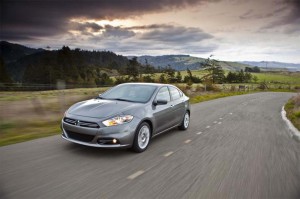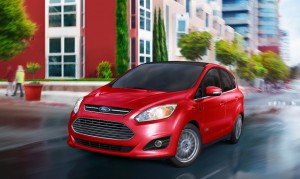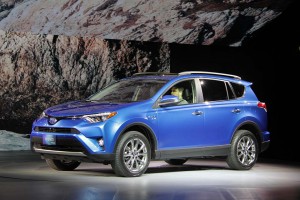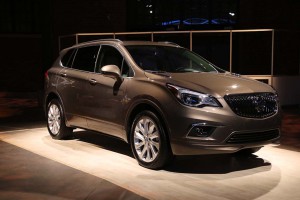Desperate to reverse declining sales of some of its smallest passenger cars, Fiat Chrysler Automobiles is trimming back the line-up of its compact Dodge Dart line and cutting as much as $1,600 off the sticker price of the three remaining models.
The Detroit maker isn’t alone. Across the industry, automakers are struggling to shore up demand for their sedans and coupes, especially the compact and smaller models that have been especially hard hit by the past year’s sharp dip in fuel prices.
Manufacturers are ramping up incentives, trimming model lines and, in some cases, cutting production or moving it offshore in a bid to reduce production costs.
“We are repositioning the Dart lineup to better align production and dealer inventory with consumer demand and preference,” Tim Kuniskis, FCA’s head of passenger car brands.
(FCA laying off 1,300 at car plant. Click Here for the story.)
The maker’s CEO Sergio Marchionne recently said Fiat Chrysler would consider outsourcing production of the Dart, as well as the Chrysler 200 sedan, allowing it to shift production to the SUVs, crossovers and other models that are generating far stronger sales and profits. For now, FCA is indefinitely laying off 1,300 workers at its Sterling Heights, Michigan assembly plant due to sluggish demand for the 200.
Ford, meanwhile, is moving production of some of its smaller models, including the Focus sedan and the C-Max people mover, to Mexico – generating significant controversy in the process.
There have been a few exceptions in the small car segment. The Chevrolet Sonic was up 11% for the first three months of 2016, but another General Motors model, the Buick Verano, dipped more than 9%. And the domestic manufacturers aren’t alone.
The Toyota Yaris subcompact plunged 51.3% in March, while the traditionally strong-selling Corolla was down 8.4% for the month. Even the new Prius hybrid dropped 24.7% year-over-year. Weak demand for small cars was one of the reasons Toyota chose to abandon its youth-oriented Scion brand at the end of the 2016 model-year.
(Click Here for more on March U.S. auto sales.)
The midsize passenger car segment, traditionally the heart of the American marketplace, isn’t doing much better. According to industry data, sales fell 0.4% during the first quarter of 2016, even while the overall U.S. market was solidly in the plus column.
“More than 2.40 million midsize cars were bought in 2015, but it slipped to the third-best-selling segment last year,” noted Stephanie Brinley, an analyst with IHS Automotive.
A historic transition occurred around the third quarter of 2015. The market share for compact utility vehicles – including both traditional sport-utes and newer crossover models – topped 14% of the American market, surpassing the declining shares of both compact and midsize cars.
For all of last year, non-luxury compact cars dipped to 14.1% of the market, down from 16.0% as recently as 2012. The midsize market fell from 16.8% to just 14.0% during the same period. And subcompacts dropped from 4.2% to 3.4%.
By comparison, compact crossovers surged from a market share of 12.3% in 2012 to 17.6% last year. Midsize utes, including both SUVs and CUVs, have grown by about a half-point of share, to 12.5% last year.
Few expect the trend to reverse any time soon, though Brinley said it will eventually level out. Joe Hinrichs, Ford’s President of the Americas, said utes of all sizes might eventually gain as much as 10 more points of market share.
Why? Analysts suggest several factors. Historically, each generation seems to find something new and different. There were station wagons when Baby Boomers were still kids, and minivans when they were having their own children. Now, Gen-X and Gen-Y, as well as those aging Boomers, have discovered utility vehicles.
“People want something different, said Jessica Caldwell, director of industry analysis at Edmunds. “And with SUVs, you get something a little different from what you’ve been driving.”
Cheap gas has clearly played a role, and it’s helped full-size pickups gain nearly a point of market share since 2012, coming in at 9.0% last year, according to IHS data. But gas prices alone aren’t the motivating force for the utility vehicle boom, nor would rebounding fuel costs necessarily pull the plug and send buyers back to sedans and coupes.
“The offerings today carry a smaller fuel-efficiency penalty,” than in the past, said analyst Brinley, often just a mile or two a gallon compared to a similarly sized passenger car. Most ute buyers, she contends, would be willing to write that off in return for the added functionality and additional benefits like an SUV’s higher seating position.
The utility vehicle boom is forcing manufacturers to rethink critical elements of product design and manufacturing. Buick, for example, has won raves for two recent concept vehicles, the Buick Avenir sedan, and Avista coupe. In years past, the maker likely would have moved to put one or both into production, “but we’re having trouble making a business case,” lamented General Motors’ global product development chief Mark Reuss.
For now, Buick plans to drop the small Verano sedan while adding a new compact utility vehicle, the Chinese-made Envision. Utes already account for 60% of the brand’s American sales and soon “will represent 70% or more of our sales in the U.S.,” forecasts the brand’s sales director Duncan Aldred.
This shift is causing some problems, as the cutbacks at FCA’s Sterling Heights plant underscores. But there is a plus side. Utility vehicles tend to generate higher revenues than comparable passenger cars, noted analyst Karl Brauer, of Kelley Blue Book. And so, unless that equation shifts as competition grows, automakers will be more than happy to shift their product mix to reflect changing consumer demand.
(Ford’s F-150 the only big pickup to earn IIHS Top Safety Pick Plus rating. Click Here for the story.)






Had not heard the Verano is being dropped.